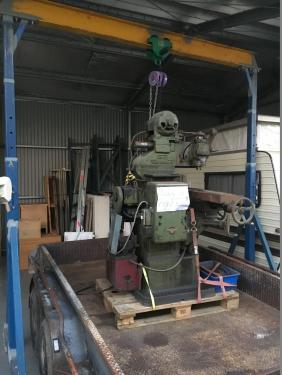09-06-2017, 08:57 AM
About a month ago I bought my first milling machine - a 1940's Van Norman #12.
My plan was to give it a quick cleanup and just use it, but I've found it needs a bit more work before the "just use it" happens.
Thought I'd start a thread to document the work in case its of any interest/use to others.
Here's the coming home photo. The white page taped on says "heavy on right side" (to save you straining your eyes....)

First thing that got fixed was the missing oil level window made one from polycarbonate sheet and fitted it with an o-ring behind to seal it.
Before:

After:

Gearbox oils are easy - just plain old SAE30.
Steve
My plan was to give it a quick cleanup and just use it, but I've found it needs a bit more work before the "just use it" happens.
Thought I'd start a thread to document the work in case its of any interest/use to others.
Here's the coming home photo. The white page taped on says "heavy on right side" (to save you straining your eyes....)
First thing that got fixed was the missing oil level window made one from polycarbonate sheet and fitted it with an o-ring behind to seal it.
Before:
After:
Gearbox oils are easy - just plain old SAE30.
Steve








